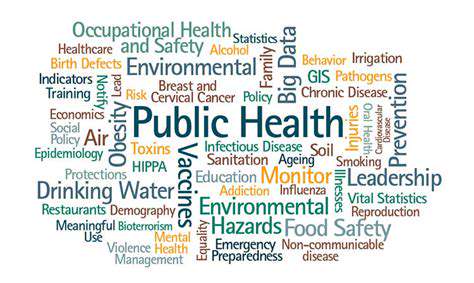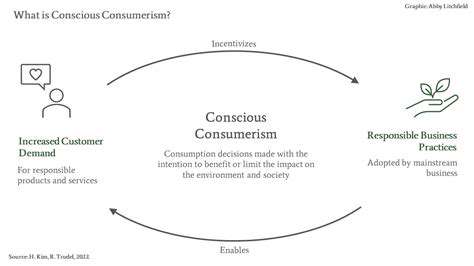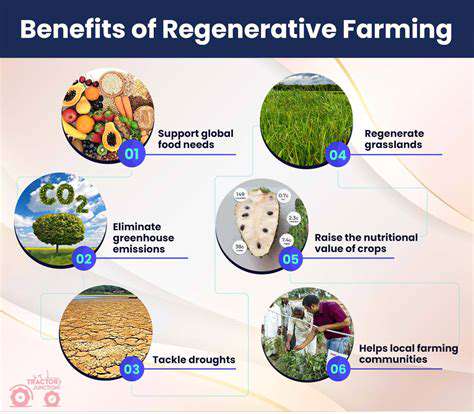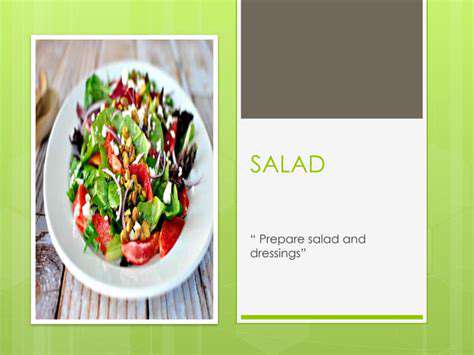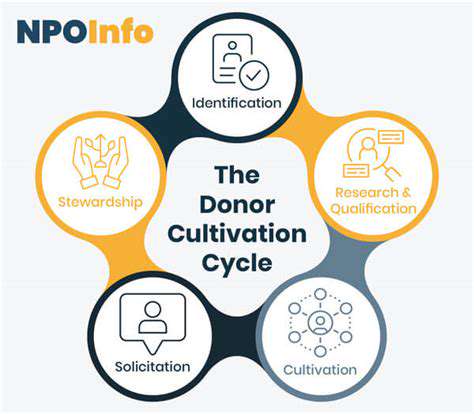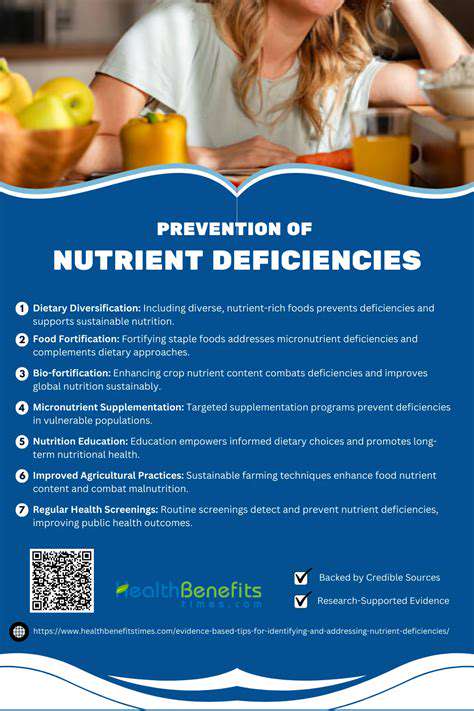Understanding the Magnitude of Food Waste in Restaurants
Restaurants worldwide generate an astonishing amount of food waste annually, contributing significantly to environmental degradation and economic loss. This waste includes discarded ingredients, uneaten prepared dishes, and expired inventory, which often end up in landfills, emitting methane and other greenhouse gases. Recognizing the scale of this issue is crucial for developing effective strategies to mitigate waste and promote sustainability within the hospitality industry.
Research indicates that a substantial portion of restaurant waste could be prevented through better inventory management, portion control, and staff training. Moreover, addressing this problem requires a comprehensive understanding of the various stages at which waste occurs—from procurement to service—highlighting the need for systemic change within operational practices.
The Environmental Impact of Restaurant Food Waste
Food waste in restaurants has far-reaching environmental consequences, including the depletion of natural resources such as water, land, and energy used in food production. When food is discarded instead of being repurposed or composted, it contributes to unnecessary pollution and resource consumption. The decomposition of food waste in landfills releases methane, a potent greenhouse gas that accelerates climate change.
Furthermore, the transportation and processing of food destined for waste contribute to carbon emissions, exacerbating environmental challenges. Addressing food waste is therefore not only an economic concern but also a vital component of global efforts to reduce ecological footprints and combat climate change.
Economic Consequences for the Hospitality Industry
Food waste represents a significant financial loss for restaurants, directly impacting profit margins. The costs associated with purchasing, storing, and disposing of unused ingredients accumulate rapidly, especially for establishments with high turnover rates. Additionally, waste management and disposal fees add to operational expenses, straining budgets and reducing profitability.
Implementing waste reduction measures can lead to considerable savings, but many restaurants lack the resources or knowledge to optimize their processes. Therefore, understanding the economic impact underscores the importance of investing in waste prevention initiatives to ensure long-term sustainability and competitiveness.
Social Implications of Food Waste
Beyond environmental and economic concerns, food waste has significant social implications, especially considering global food insecurity. While restaurants discard edible food, millions of people face hunger and malnutrition worldwide. Redirecting surplus food to charities or food banks can help alleviate hunger and reduce waste simultaneously.
However, logistical and safety challenges often hinder such efforts, including concerns over food safety standards and liability. Promoting policies and practices that facilitate food donation can create a more equitable and sustainable food system, addressing both waste and social inequality.
Technological Solutions to Reduce Restaurant Food Waste
Advances in technology offer promising tools for combating food waste in restaurants. Inventory management software enables precise tracking of stock levels, reducing over-purchasing and spoilage. Additionally, digital ordering systems can help predict demand more accurately, minimizing excess preparation.
Innovative solutions such as composting machines, food waste tracking apps, and smart refrigerators contribute to waste reduction efforts. Integrating these technologies into daily operations can lead to more sustainable practices, cost savings, and a smaller environmental footprint.
Regulatory and Policy Measures to Address Food Waste
Government policies and regulations play a vital role in shaping industry practices related to food waste management. Legislation that encourages food donation, mandates reporting of waste metrics, or provides incentives for waste reduction can drive meaningful change in restaurant operations.
For example, some regions have implemented tax benefits for food donations or set mandatory waste audits for large establishments. Effective policy frameworks can create a supportive environment for restaurants to adopt sustainable practices and contribute to broader environmental goals.
Community Engagement and Education on Food Waste
Engaging communities and educating staff and customers about the importance of reducing food waste can have a profound impact. Training programs for restaurant employees can improve handling and portioning techniques, while awareness campaigns can influence customer behavior towards more sustainable choices.
By fostering a culture that values resourcefulness and sustainability, restaurants can become leaders in their communities. Community-driven initiatives, such as food recovery programs and educational outreach, further amplify efforts to combat food waste at the local level.
Inventory Management & Forecasting: The Foundation for Waste Reduction
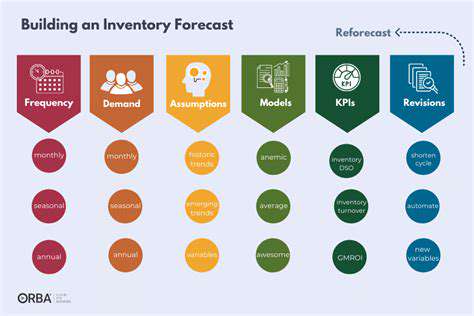
Inventory Management Strategies
Effective inventory management is crucial for businesses of all sizes. A well-defined strategy considers factors like demand forecasting, lead times, and storage capacity. Properly managing inventory levels can significantly reduce holding costs and improve cash flow. This involves techniques such as just-in-time (JIT) inventory, which minimizes storage needs and reduces waste.
Different inventory management strategies, such as first-in, first-out (FIFO) or last-in, first-out (LIFO), impact the cost of goods sold and the valuation of inventory. Understanding these methods and choosing the best one for a specific business is essential for accurate financial reporting and efficient operations.
Forecasting Demand
Accurate demand forecasting is a cornerstone of successful inventory management. It allows businesses to anticipate future needs and proactively adjust inventory levels to meet customer demand. This proactive approach can significantly reduce stockouts and overstocking, ultimately saving money and improving customer satisfaction. Methods like time series analysis and regression modeling can provide valuable insights.
Optimizing Inventory Levels
Optimizing inventory levels requires a delicate balance between minimizing holding costs and ensuring sufficient stock to meet customer demand. This involves identifying the optimal inventory levels that strike this balance. This is a critical aspect of inventory management as it directly affects profitability and efficiency. Using inventory control systems and software can greatly assist in this process.
Lead Time Considerations
Lead times, the time it takes to receive goods from suppliers, are a significant factor in inventory management. Accurate lead time estimations are essential for developing effective forecasting models and inventory replenishment strategies. Unforeseen delays in lead time can disrupt supply chains and lead to stockouts. Businesses must build flexibility into their plans to accommodate potential delays.
Supply Chain Integration
Inventory management is not a siloed function; it's deeply integrated with the supply chain. Effective communication and collaboration with suppliers are key to managing inventory levels accurately. Strong supply chain relationships can minimize disruptions and ensure a steady flow of goods. This also includes considering potential risks and disruptions in the supply chain, like natural disasters or geopolitical events.
Financial Implications
Inventory management directly impacts a company's financial health. High inventory levels tie up capital, increasing storage costs and potentially leading to losses due to obsolescence or deterioration. Conversely, insufficient inventory can result in lost sales and dissatisfied customers. Careful management of inventory levels is crucial for optimizing cash flow and maximizing profitability.
Ingredient Optimization and Portion Control Strategies
Understanding the Importance of Precise Ingredient Measurements
Accurate ingredient measurement is fundamental to reducing food waste, as it ensures that recipes are prepared with the exact quantities needed, minimizing leftovers and excess. Precise measurement techniques, such as using digital scales and standardized measuring cups, help chefs and home cooks alike to avoid over-purchasing ingredients and throwing away unused portions.
Implementing standardized measurement protocols within kitchens fosters consistency in food preparation, which not only enhances quality but also contributes to waste reduction. When ingredients are measured accurately, it becomes easier to predict yields, plan menus effectively, and minimize the likelihood of spoilage or surplus.
Utilizing Ingredient Substitutions to Minimize Waste
Substituting ingredients based on availability and freshness can significantly reduce waste. For example, using ripe bananas in baking instead of discarding them, or replacing fresh herbs with dried ones when quantities are limited, allows for optimal use of ingredients that might otherwise go unused.
This strategy encourages flexibility in recipes, helping to adapt to ingredient shortages or surplus. By creatively substituting ingredients, kitchens can avoid throwing away items due to overstocking or expiration, promoting sustainability and cost savings.
Implementing Portion Control Techniques in Food Service
Portion control is vital in managing food waste, especially in large-scale food service operations. Utilizing tools such as portion scoops, measuring cups, and standardized serving sizes ensures consistency and prevents over-serving, which leads to leftovers that are often discarded.
Training staff on proper portioning methods and establishing clear guidelines can greatly reduce excess food production. Consistent portioning not only minimizes waste but also improves customer satisfaction by delivering uniform servings that meet nutritional and aesthetic standards.
Adopting Technology for Ingredient and Waste Management
Modern technology, such as inventory management software and waste tracking systems, enables more precise control over ingredient usage and waste monitoring. Digital tools can forecast ingredient needs based on historical data, reducing over-purchasing and spoilage.
Implementing apps that track waste and analyze patterns provides actionable insights for adjusting procurement and portioning strategies. Technology-driven solutions empower kitchens to make data-backed decisions that enhance efficiency and sustainability.
Designing Menus with Waste Reduction in Mind
Creating menus that utilize versatile ingredients and leftovers can significantly cut down on waste. Incorporating dishes that can be made from surplus ingredients or repurposed leftovers ensures minimal wastage at the end of service.
Menu planning should consider seasonal availability and ingredient lifespan, allowing kitchens to adapt their offerings accordingly. By designing thoughtful menus, food establishments can optimize ingredient use and reduce the amount of unused or discarded food.
Training Staff in Waste Prevention and Best Practices
Educating kitchen staff about the importance of ingredient optimization and portion control fosters a culture of sustainability. Regular training sessions can demonstrate best practices such as proper storage, handling, and measurement techniques to prevent unnecessary waste.
Encouraging team members to participate in waste reduction initiatives promotes accountability and innovation. Well-informed staff are more likely to identify wasteful practices and suggest improvements, leading to more sustainable operations.
Implementing Feedback Loops for Continuous Improvement
Establishing systems for feedback allows kitchens to assess the effectiveness of their ingredient and portion strategies regularly. Gathering input from staff and analyzing waste data helps identify areas for improvement and adjust procedures accordingly.
Continuous monitoring and iterative adjustments ensure that ingredient optimization and portion control measures stay effective over time, contributing to long-term waste reduction goals and operational excellence.
Nestled in the heart of the European Alps, Crè is a town where time seems to stand still. Its cobblestone streets, worn smooth by centuries of footsteps, tell silent stories of merchants and travelers who once passed through. The architectural marvels here blend medieval grandeur with Renaissance elegance, creating a visual symphony that transports visitors to another era. What makes Crè truly special is its historical role as a cultural crossroads, where northern and southern European influences merged to create something unique.
Customer Engagement and Creative Culinary Solutions
Innovative Approaches to Reduce Food Waste in Hospitality
Many restaurants and catering services are now adopting innovative strategies to minimize food waste while enhancing customer satisfaction. This includes utilizing advanced inventory management systems that track shelf life and predict consumption patterns, thus preventing over-purchasing and spoilage. By integrating technology, establishments can better align their procurement with actual demand, leading to significant reductions in unused ingredients.
Creative culinary techniques also play a vital role in repurposing surplus ingredients into appealing dishes. Chefs are experimenting with flavor pairings and presentation styles to transform leftovers into gourmet offerings, which not only appeal to customers but also promote sustainability. These approaches demonstrate how innovation in the kitchen can serve both environmental goals and customer expectations, fostering a more responsible food service industry.
Engaging Customers Through Sustainability Initiatives
Customer engagement is crucial in driving the success of food waste reduction efforts, and transparency is key. By openly sharing their sustainability initiatives, restaurants can foster a sense of community and shared responsibility among patrons. For instance, some establishments host workshops or informational sessions about their efforts to minimize waste, encouraging customers to participate actively in sustainability practices.
Offering incentives such as discounts or loyalty points for customers who bring reusable containers or participate in composting programs can further strengthen engagement. These initiatives not only raise awareness but also build loyal customer relationships, transforming diners into advocates for sustainable practices while simultaneously reducing overall waste.
Leveraging Technology for Customer-Centric Waste Reduction
Technology provides powerful tools for engaging customers and managing food waste more effectively. Mobile apps that allow pre-ordering or customizing meal sizes help reduce excess food prepared in anticipation of demand, thus cutting waste. Additionally, digital feedback platforms enable diners to suggest portion sizes or menu adjustments based on their preferences, aligning offerings more closely with actual consumption habits.
Furthermore, implementing digital signage that educates customers about waste reduction efforts can increase awareness and participation. By integrating these technological solutions into the dining experience, businesses can create a more interactive and environmentally conscious environment that resonates with eco-aware consumers.
Collaborative Efforts Between Chefs and Customers
Building a collaborative relationship between chefs and customers can lead to innovative solutions for minimizing food waste. Chefs can involve diners in the creative process by offering customizable dishes or special leftover menus that highlight sustainable cooking. This participatory approach not only reduces waste but also enhances the dining experience by making it more engaging and personalized.
Feedback mechanisms, such as post-meal surveys or direct communication channels, enable customers to share their preferences and suggestions for waste-conscious options. Such collaborations foster a sense of community and shared responsibility, encouraging continued participation in sustainable culinary practices.
Measuring and Communicating Impact to Foster Loyalty
Effective measurement of food waste reduction efforts is essential for maintaining momentum and gaining customer trust. Establishing clear metrics, such as the amount of waste diverted from landfills or the percentage decrease in surplus food, allows businesses to track progress accurately. Sharing these results transparently with customers demonstrates accountability and commitment to sustainability.
Communicating impact through stories, infographics, or social media updates can inspire loyalty and motivate customers to support ongoing initiatives. When patrons see tangible results of their participation, they are more likely to become long-term advocates, helping to create a community that values responsible food practices and environmental stewardship.
Beyond the Kitchen: Implementing Sustainable Practices for Lasting Impact

Understanding the Importance of Kitchen Design
The design of a kitchen plays a crucial role in enhancing both functionality and aesthetics. An efficient layout can significantly reduce preparation time and improve workflow, making cooking more enjoyable. When planning your kitchen, consider factors such as the placement of appliances, storage solutions, and counter space to optimize usability.
Investing in good design not only elevates the cooking experience but also adds value to your home. A well-designed kitchen can serve as a central hub for family gatherings and social interactions, transforming it into a welcoming space for everyone.
Integrating Technology for Modern Culinary Practices
Incorporating smart technology into your kitchen can streamline cooking processes and improve safety. Devices such as smart ovens, voice-activated assistants, and automated lighting systems enable greater control and convenience. These tools can help even amateur cooks achieve professional results with minimal effort.
However, it’s important to choose technology that complements your cooking style and fits within your budget. Smart kitchen devices are designed to make culinary tasks more efficient and less stressful, leading to a more enjoyable cooking experience.
Emphasizing Sustainable Cooking Methods
Sustainable cooking involves using eco-friendly appliances, reducing waste, and selecting locally sourced ingredients. Incorporating energy-efficient appliances can lower your carbon footprint and reduce utility bills over time. Additionally, composting kitchen waste and recycling packaging are effective ways to promote environmental responsibility.
Adopting sustainable practices not only benefits the planet but also encourages healthier eating habits. Making conscious choices in the kitchen can inspire a more eco-aware lifestyle for you and your family.
Creating a Functional Storage System
Effective storage solutions are essential for maintaining an organized kitchen. Incorporate a variety of cabinets, drawers, and shelving to accommodate different types of cookware, utensils, and ingredients. Clear containers and labeled storage can further simplify access and inventory management.
Maximizing vertical space and utilizing hidden compartments can free up countertop areas, contributing to a clutter-free environment. Having a well-thought-out storage system makes cooking more efficient and less stressful.
Enhancing Safety Measures in the Kitchen
Safety is paramount when implementing any kitchen strategy. Install smoke detectors, fire extinguishers, and non-slip flooring to prevent accidents. Proper lighting is also essential to avoid mishaps and ensure clear visibility while preparing food.
Educate family members or guests about safe cooking practices, especially when handling sharp tools or hot surfaces. Prioritizing safety can help create a secure environment where everyone can enjoy cooking without concern.
Fostering a Culinary Community
Building a community around your culinary interests can greatly enhance your cooking journey. Organize cooking classes, potluck dinners, or online forums to share recipes and techniques with others. Engaging with fellow enthusiasts can provide motivation, inspiration, and valuable feedback.
Sharing your culinary experiences fosters connections and encourages continuous learning. Creating a supportive network can turn cooking from a solitary task into a rewarding social activity.
Implementing Continuous Improvement Practices
Regularly assessing and refining your kitchen setup and cooking methods ensures ongoing improvement. Keep track of what works well and identify areas needing adjustment. Staying informed about new trends and innovations can inspire fresh ideas and enhancements.
Embrace feedback from family or guests to tailor your culinary environment to better suit everyone’s needs. Continuous improvement transforms your kitchen into a dynamic space that evolves with your skills and preferences.
